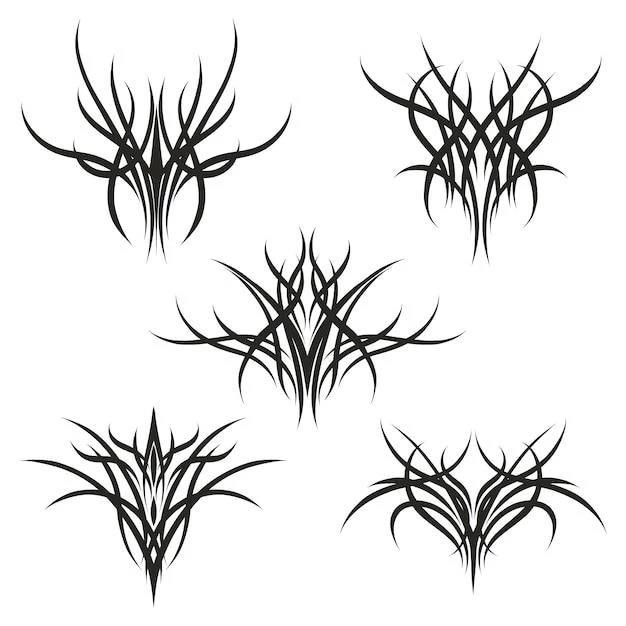The Thorny Devil: Master of Desert Adaptation
The Thorny Devil (Moloch horridus), a remarkable lizard found solely in the arid landscapes of Australia, stands as a testament to nature’s ingenuity. Its intimidating appearance, characterized by an armor of thorny spines, belies a fascinating suite of adaptations that allow it to thrive in one of Earth’s harshest environments. This seemingly fearsome creature is, in reality, a harmless and slow-moving ant-eater, showcasing the intricate relationship between evolution and survival.
Physical Adaptations for Survival
The Thorny Devil’s most striking feature, its formidable armor of thorny spines, plays a crucial role in its survival. These spines, composed of keratin, the same material as human fingernails, provide a robust defense mechanism against predators. When threatened, the Thorny Devil tucks its head between its front legs, exposing a spiky “false head” on its back, a clever ruse to deter attackers. The spines also contribute to the lizard’s water-collecting abilities, channeling precious moisture towards its mouth via a network of capillary grooves.
Camouflage is another essential adaptation for life in the arid Australian outback. The Thorny Devil’s coloration, a mottled pattern of browns, yellows, and oranges, provides effective concealment against the sandy soils and spinifex grasses of its habitat. This camouflage, coupled with its slow, deliberate movements, makes the Thorny Devil a master of blending in, evading the watchful eyes of predators such as birds of prey and larger reptiles.
The Thorny Devil’s body size, typically reaching lengths of up to 20 centimeters (8 inches), reflects its adaptation to a diet of ants and termites. This relatively small size allows for agility in navigating the complex microhabitats where its prey resides. Furthermore, the lizard’s specialized teeth, adapted for crushing the hard exoskeletons of ants, demonstrate a finely tuned evolutionary response to its dietary niche.
In addition to its defensive and camouflaging attributes, the Thorny Devil possesses a unique adaptation known as “hygroscopic skin.” This specialized skin, covered in microscopic grooves, enables the lizard to collect moisture from its environment, such as dew or rain, and transport it to its mouth via capillary action. This remarkable ability highlights the Thorny Devil’s exceptional adaptation to water scarcity, a defining feature of its arid habitat.
Water Collection and Consumption

The arid landscapes inhabited by the Thorny Devil present a significant challenge: water scarcity. Yet, this remarkable lizard has evolved an extraordinary adaptation to overcome this obstacle – its highly specialized skin. This intricate system allows the Thorny Devil to collect and consume water in a manner unlike any other reptile, showcasing a remarkable example of natural engineering.

The Thorny Devil’s skin is covered in a network of microscopic grooves, forming a complex system of interconnected channels. These channels, situated between the lizard’s overlapping scales, act like tiny capillaries, drawing in moisture via capillary action. When dew condenses on the lizard’s body or it brushes against damp vegetation, water is drawn into these minute channels and transported towards the lizard’s mouth.

The mechanism behind this remarkable water-collecting ability lies in the unique structure of the Thorny Devil’s skin. The grooves, combined with the hydrophilic (water-attracting) nature of the skin’s surface, create a system that efficiently draws in and transports water droplets. This process allows the Thorny Devil to exploit even the slightest traces of moisture present in its environment, demonstrating a remarkable adaptation to its arid habitat.
Furthermore, the Thorny Devil’s water consumption strategy extends beyond its specialized skin. Observations indicate that these lizards will also engage in a behavior known as “rain harvesting.” During periods of rainfall, the Thorny Devil will position itself with its head tilted upwards, allowing rainwater to run down its body and collect in the grooves on its skin. This behavior highlights the multifaceted approach that the Thorny Devil employs to access and utilize water in its challenging environment.
Defense Mechanisms Against Predators
In the harsh and unforgiving landscapes of the Australian desert, the Thorny Devil faces constant threats from a variety of predators. These include birds of prey, such as brown falcons, as well as larger reptiles and some mammals. However, this seemingly vulnerable lizard has evolved an impressive repertoire of defense mechanisms that allow it to thrive despite these dangers.
The Thorny Devil’s most conspicuous defense is its namesake armor: a formidable array of thorny spines covering its entire body. These spines, sharp and rigid, serve as a powerful deterrent to potential attackers. The mere act of attempting to bite or swallow the Thorny Devil is rendered difficult and unpleasant, discouraging all but the most determined predators.

Complementing this spiky defense is the Thorny Devil’s remarkable camouflage. Its coloration, a mottled pattern of browns, yellows, and oranges, blends seamlessly with the sandy soils and dry vegetation of its environment. This natural camouflage makes the Thorny Devil incredibly difficult to spot, allowing it to avoid detection by visually-oriented predators.
Perhaps the most intriguing defense mechanism in the Thorny Devil’s arsenal is its “false head.” This remarkable adaptation involves a bony protuberance located on the back of the lizard’s neck. When threatened, the Thorny Devil tucks its real head down between its front legs, presenting the false head as a more appealing target. This deceptive maneuver can confuse predators, diverting attacks away from the lizard’s vulnerable head region.
In addition to these physical defenses, the Thorny Devil exhibits behavioral adaptations that enhance its survival chances. When faced with danger, it may inflate its body with air, making itself appear larger and more intimidating. Furthermore, its slow, deliberate movements can make it difficult for predators to detect its presence, further reducing the risk of attack.
Diet and Feeding Strategies
The Thorny Devil, despite its intimidating appearance, is a specialized insectivore with a diet consisting almost exclusively of ants, particularly those belonging to the genus Iridomyrmex, commonly known as meat ants. This dietary specialization has led to the development of fascinating feeding strategies and morphological adaptations that enable the Thorny Devil to thrive in its arid environment.
Locating ant trails forms the crux of the Thorny Devil’s foraging strategy. Relying on its keen sense of sight, the lizard patiently searches for the telltale signs of ant activity. Once a trail is located, the Thorny Devil positions itself strategically, often near the entrance of an ant nest or along a well-traveled path. This passive hunting technique conserves valuable energy, a crucial adaptation in the harsh desert environment.
The Thorny Devil’s feeding mechanism is a marvel of adaptation. Its tongue, unlike those of many lizards, is not used for capturing prey. Instead, it employs a “sticky beak” method. Its jaws are lined with rows of tiny, peg-like teeth, perfectly designed for scooping up ants. The lizard’s sticky tongue then sweeps into action, collecting the ants and drawing them into its mouth. This efficient system allows the Thorny Devil to consume large quantities of ants with minimal effort.
The sheer volume of ants consumed by a Thorny Devil is remarkable. Studies estimate that a single lizard can consume thousands of ants in a single day, a testament to the abundance of its primary food source. This reliance on a single prey species, while seemingly limiting, highlights the Thorny Devil’s successful adaptation to a specific ecological niche within its arid environment.

Reproduction and Life Cycle in Arid Environments

The Thorny Devil’s reproductive cycle, like many aspects of its biology, reflects a remarkable adaptation to the challenges of life in Australia’s arid interior. From courtship rituals to nesting strategies, this unique lizard exhibits behaviors finely tuned to ensure the survival of its offspring in an environment characterized by unpredictable rainfall and extreme temperatures.

The breeding season for the Thorny Devil typically commences in the cooler months, between August and December. During this time, males engage in displays of head-bobbing and leg-waving to attract potential mates. Once a female is receptive, mating occurs, and the female begins the crucial task of selecting a suitable nesting site.
Nesting site selection is paramount to the survival of the Thorny Devil’s eggs. Females seek out areas of loose, sandy soil, often beneath spinifex grasses or other vegetation, where they excavate burrows that can extend up to 30 centimeters deep. These burrows provide a stable microclimate, protecting the eggs from temperature extremes and potential predators.
The female Thorny Devil lays a clutch of 3 to 10 eggs within the burrow, carefully concealing the entrance with sand. The incubation period, typically lasting between 90 and 132 days, is influenced by environmental factors, particularly temperature and moisture levels. Once hatched, the miniature Thorny Devils, measuring just a few centimeters long, emerge from the burrow to face the challenges of their arid world.
The hatchlings are independent from birth, relying on their innate instincts to locate ant trails and avoid predators. Growth rates are relatively slow, with sexual maturity reached between 3 and 5 years of age. The Thorny Devil’s lifespan in the wild is estimated to be between 6 and 20 years, a testament to its remarkable resilience in a challenging environment.










